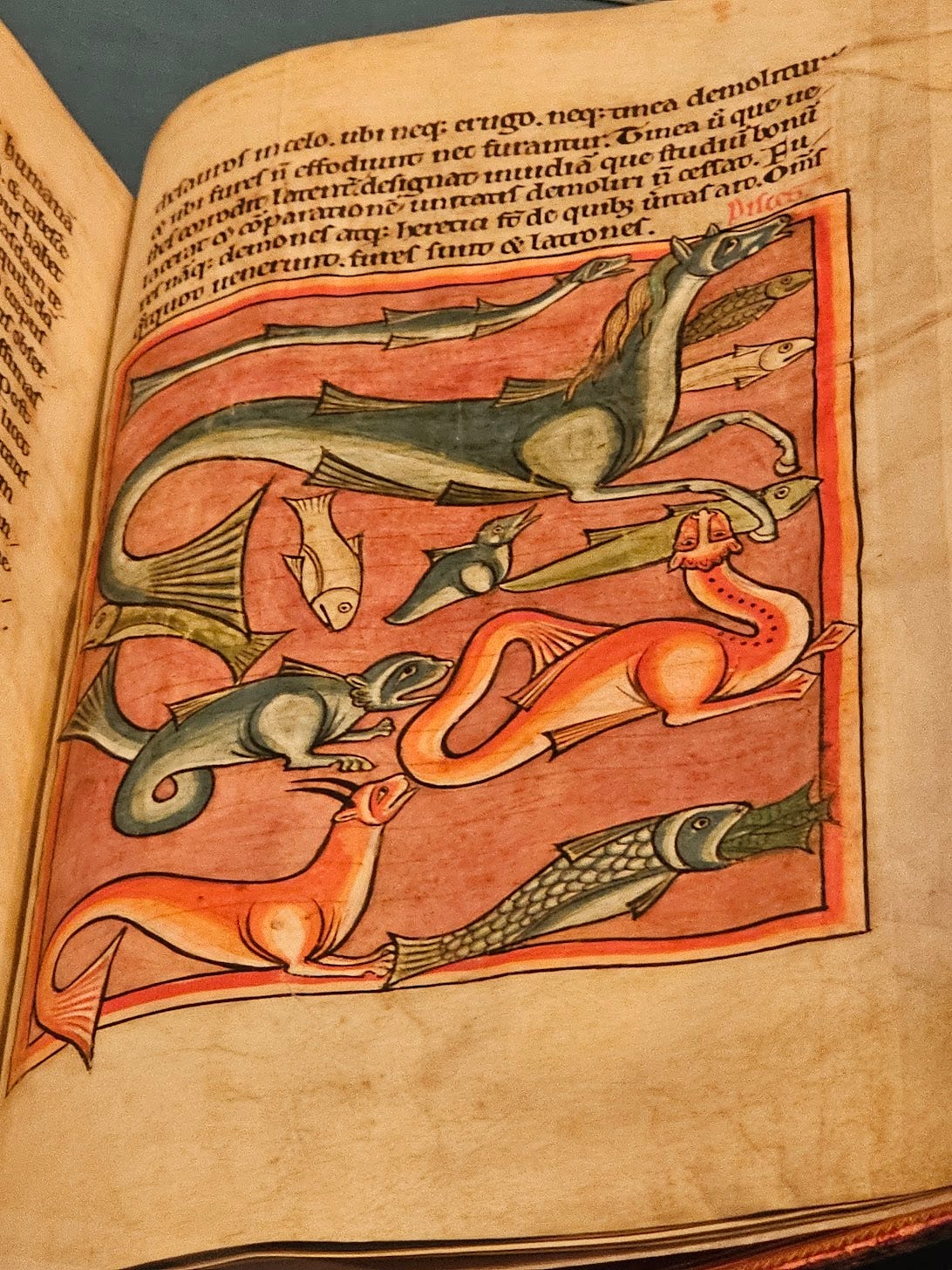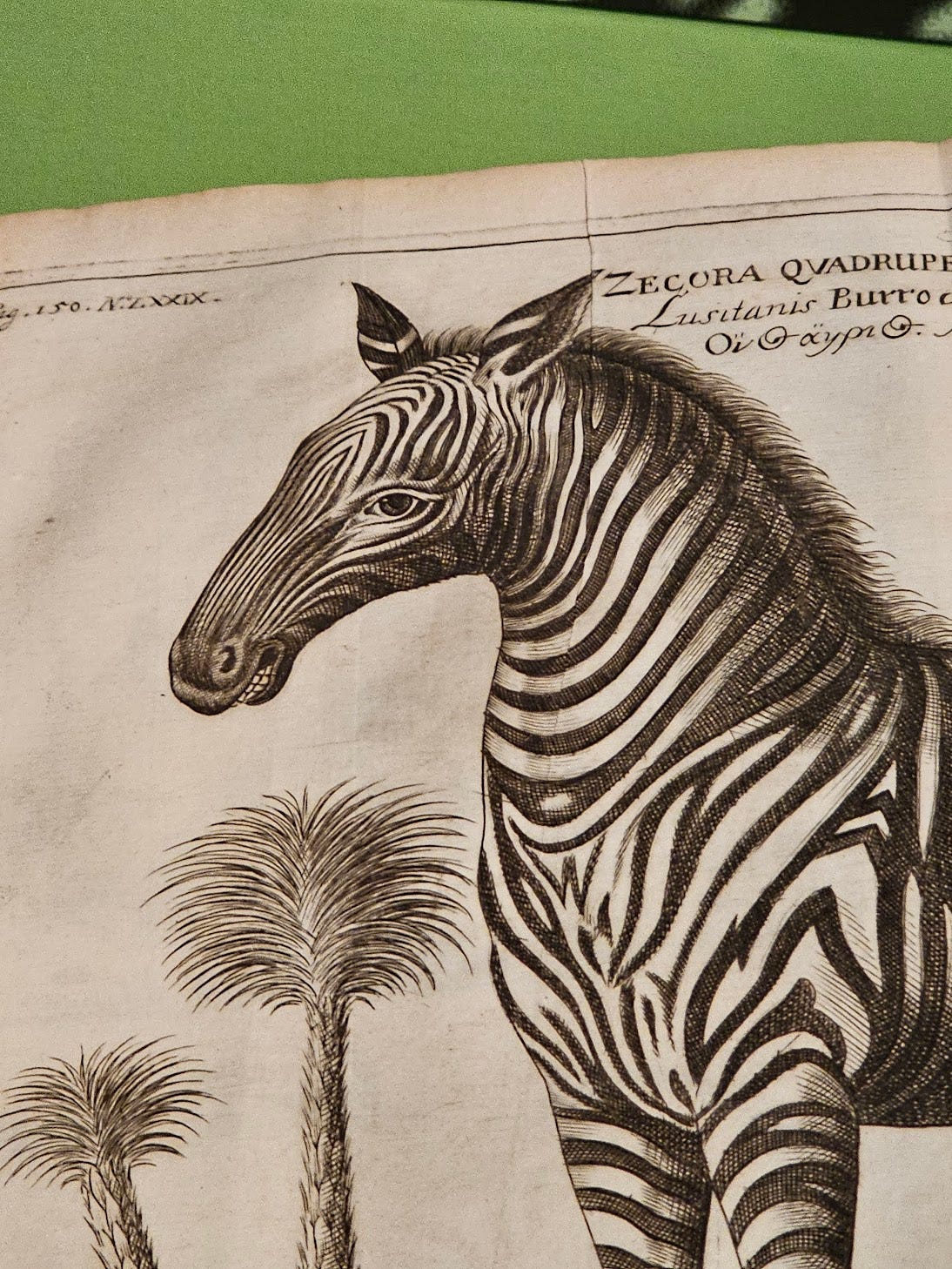🐴 Art, Animals, and Algorithms: Lessons on Creativity
+ 📚 Novela; How will ChatGPT affect Bing Ads?
Hi,
You may have seen the new UNESCO report that stated, “Edtech firms ‘lack evidence’ to prove products’ impact”.
Or even this sort of thing on social media:
Yep, the EdTech industry has a pretty bad reputation. And it’s easy to see why: gimmick-driven companies set aggressive user acquistion goals with their VC money, and the product suffers further still.
Education is just not an easy problem to “solve”, in the way Uber “solves” your need to get from the zoo to the vermuteria (your lifestyle may differ from that of the author).
So anyway, we’re just about ready to go live over here at Novela. The EdTech startup you can - and surely should - like. We even think we can show the impact of what we do. We’re teaching the core concepts, à la Euclid, with a clear set of learning objectives. But it’s more fun than it sounds.
Intrigued? 🤔
We’ll start sending out demo links this week, so let me know if you’re interested!
This is what it’d look like on your screen, if you lived in an IKEA:
The first set of challenges is for a fictional retailer called Haute Stuff (expect puns). With a strict budget and a product to sell, you have to manage a search marketing campaign to hit the targets.
Is there AI in it? Well, naturally. We’ve got a digital marketing simulations chatbot, Ela, a tool for optimising your ads, and even some interactive customer personas.
I do wonder where Mark Zuckerberg gets his ideas, eh? Wouldn’t be like him to steal them from a plucky new entrant, would it? 🤨
A Day at the Library
I took a little trip to the British Library, so I did.
I went for what I call a “double-header”. That’s two exhibitions, back-to-back:
Animals: Art, Science and Sound
Digital Storytelling
If you’re new to hi, tech., you’ll think I’m here to tell you about the latter.
You’re wrong. (Welcome, by the way.)
Any true hi, tech.-head will know I’m here to chat animals. And then in some vain attempt to justify such self-absorption, I’ll chuck in something about ChatGPT at the end.
You see, I saw this amazing image in one of the books at the exhibition:
The guy at the top was labelled as a “swimming horse”. The drawing is from the 13th century, way before the first seahorse was properly identified (c. 18th).
The eggheads think that this drawing is based on the hippocamp, a creature from Phoenician, Roman and Greek mythology. Yet they assume that the artist here was working purely from an oral description. There are lots of visual versions of this creature, all working from the vague concept of a “swimming horse”.
Using today’s modern technology, I would offer the following addition to the canon:
There was also a rather literal attempt to draw the “monkfish”:
This got me thinking about how people collaborate. Creativity is, let’s be honest, a solitary activity.
I believe this is not only down to the process of idea generation, which does primarily occur in an independent mind. It’s also due to the way we communicate our half-formed ideas. As someone in this very position at my startup right now, it’s more than a theoretical conundrum for me.
So much of the value of an idea can be lost in the communicative gaps between people.
Have you ever - and I mean ever - been part of a good “brainstorm”?
Yes, “the camel is a horse designed by committee” and all that.
I attended the “After Impressionism” show at the National Gallery yesterday. (When do I get time to work on the startup, you ask?)
The exhibition showed how visual art splintered after the Impressionist movement, with different artists responding to the works of Monet and co. in different ways. It ends with paintings by Georges Braque and Pablo Picasso.
It reminded me of that Braques quote about how he and Picasso pushed and pulled each other to greater and greater creative heights:
“We were like mountain-climbers roped together.”
Creative duos can indeed reach more rarified air. In the case of Braque and Picasso, they shared an inchoate language that would later be formalised as Cubism.
However, there are examples of such partnerships where each half expresses itself in a different language. Mozart conveys - and enhances - the message of Lorenzo da Ponte’s libretto through music, in the three operas they composed together. Wolfie understood the deeper meaning of the words and could translate that into music.
The result is seemingly alchemical, yet altogether rational at heart. If we strip it back, we are talking about pure, effective communication of ideas. That is the bedrock for collective creativity.
Here comes the ChatGPT bit:
There’s a lesson we can apply in our own collaboration with AI technology here. In fact, there’s a message here for my own company as I try to unjumble my own educational ideas and turn them into technology.
But anyway, we do have an opportunity to put generative AI technology to good use. However, too few of us understand:
How it works
How our own minds work
This means we often fear the technology and then fail to use it effectively. We ask it to write blog posts or emails, when it could be that collaborative partner, that fellow mountain-climber.
With this in mind, let’s build on those ideas by bringing in another voice:
A chat with Amani Majed from Hallam Search
Amani Majed is a senior paid media consultant at Hallam, a digital marketing agency. Amani took a trip to the Microsoft HQ in Paris recently to hear about the company’s plans to integrate OpenAI’s technology (but mainly ChatGPT) into its Bing Ads products.
I was rather intrigued, so I caught up with Amani to hear about the trip.
She raised a number of important questions about the new, ChatGPT-driven search experience on Bing. As Amani put it, “When the user searches, they no longer see websites in their results. They see text in a chat box”.
Like so:
A town this big and only one vermuteria. How do we live?
This isn’t a million miles from what Google’s instant answers have done for years. You’ll note that Bing just condenses my conversational query to its essence: ‘best vermuteria near me’, then pulls the content from different websites. In the past, I’d have seen a list of links and would then have perused the websites myself.
Amani sees a number of implications, particularly for ecommerce. Microsoft is launching new features that will turn the chatbot into a personal shopper, with filters in the chat box to ler the user complete their browsing without visiting a retailer’s website.
It could be handy for the user, but what does this mean for an advertiser? As Amani notes, “I want to know how I can make sure my products are shown in these spaces.”
Well, there will be advertising. That bit is for sure. The rest is unclear, however.
Microsoft said that advertisers’ accounts will automatically be transferred across to this “new Bing” and they do not need to create new ads to serve within the chat interface. This is a possibility, but for now advertisers do not need to take action. This applies to Shopping ads as well as traditional Search ads.
The biggest challenge for advertisers within all of this change is measurement. The shift to Performance Max on Google, which really operates as a “black box”, has been challenging enough. Microsoft is launching its own version of PMax soon, too.
To add in chat-based ads, but not show the advertisers where and when their products are shown, will muddy the waters further still.
For now, advertisers can only focus on creating high-quality inputs for the AI to use. This applies to website content and also the inputs they submit in the Bing Ads interface.
Amani did ask about how the ad delivery system will decide which ads to show and Microsoft’s response was that it all comes down to serving the user query. Understanding user needs, then creating the best content to satisfy them, will mean the advertiser is giving Microsoft what it wants to serve its own purpose.
It’s not a glamorous answer on an easy one to apply, but it’s an honest one. Sure, the new age of AI means robots can do some of what we do today, but the most skilled marketers will get the best use out of the AI. The “old school” marketing principles will come back into fashion.
What else can we expect? Well, if you’ll allow this author’s voice to re-enter, I can see a ChatGPT assistant that builds advertising campaigns for smaller businesses. The business submits their brand assets and budget, the bot does the rest. The results will be expensive, unless the brand knows how to control and direct the AI.
We should also expect more clarity on measurement. Amani is optimistic that the current state of affairs is just a staging post on the way to a new view on reporting. All agencies are calling for this and it serves Microsoft’s purposes too; if advertisers can see what’s happening, they can spend more.
And as Amani put it, “Advertisers need to be less resistant to change. We need to understand that we cannot control every parameter of our campaigns.”
In fact, to do so will only hold the industry back.
Want to train your team for the future of search? Get in touch for those Novela demos!
Also, see this early design for Bojack Horseman, circa 1359:










